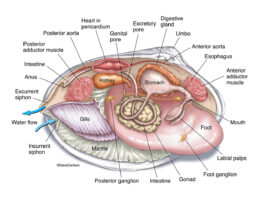The horse skeleton is a complex system of bones that supports the horse’s body, protects its vital organs, and allows it to move. Here is a brief description of the labeled parts of the horse skeleton:
- Skull: The bony structure that forms the head of the horse and protects the brain, eyes, and other sensory organs.
- Neck vertebrae: The series of bones that make up the horse’s neck and support the head.
- Withers: The ridge of bone that forms the highest point of the horse’s back and marks the transition between the neck and back.
- Shoulder blade: The flat, triangular bone that forms the upper part of the horse’s shoulder.
- Upper arm bone: The bone that connects the shoulder blade to the lower leg bones.
- Knee: The joint that connects the upper and lower leg bones.
- Cannon bone: The long, slender bone that extends from the knee to the fetlock joint.
- Fetlock joint: The joint between the cannon bone and the pastern bones.
- Pastern bones: The two small bones that extend from the fetlock joint to the hoof.
- Coffin bone: The small, triangular bone that forms the bottom of the horse’s hoof.
- Ribs: The curved bones that form the horse’s ribcage and protect the vital organs.
- Spine: The series of vertebrae that make up the horse’s backbone and support the body.
- Pelvis: The bony structure that supports the horse’s hindquarters and connects the spine to the hind legs.
- Hip bone: The large, flat bone that forms the upper part of the horse’s hind leg.
- Thigh bone: The bone that connects the hip bone to the lower leg bones.
- Hock: The joint that connects the upper and lower leg bones of the hind leg.
- Cannon bone (hind): The long, slender bone that extends from the hock to the fetlock joint.
- Fetlock joint (hind): The joint between the cannon bone and the pastern bones of the hind leg.
- Pastern bones (hind): The two small bones that extend from the fetlock joint to the hoof of the hind leg.
These are the main labeled parts of the horse skeleton. The horse’s skeletal system is essential for movement, support, and protection, and plays a critical role in its overall health and wellbeing.



